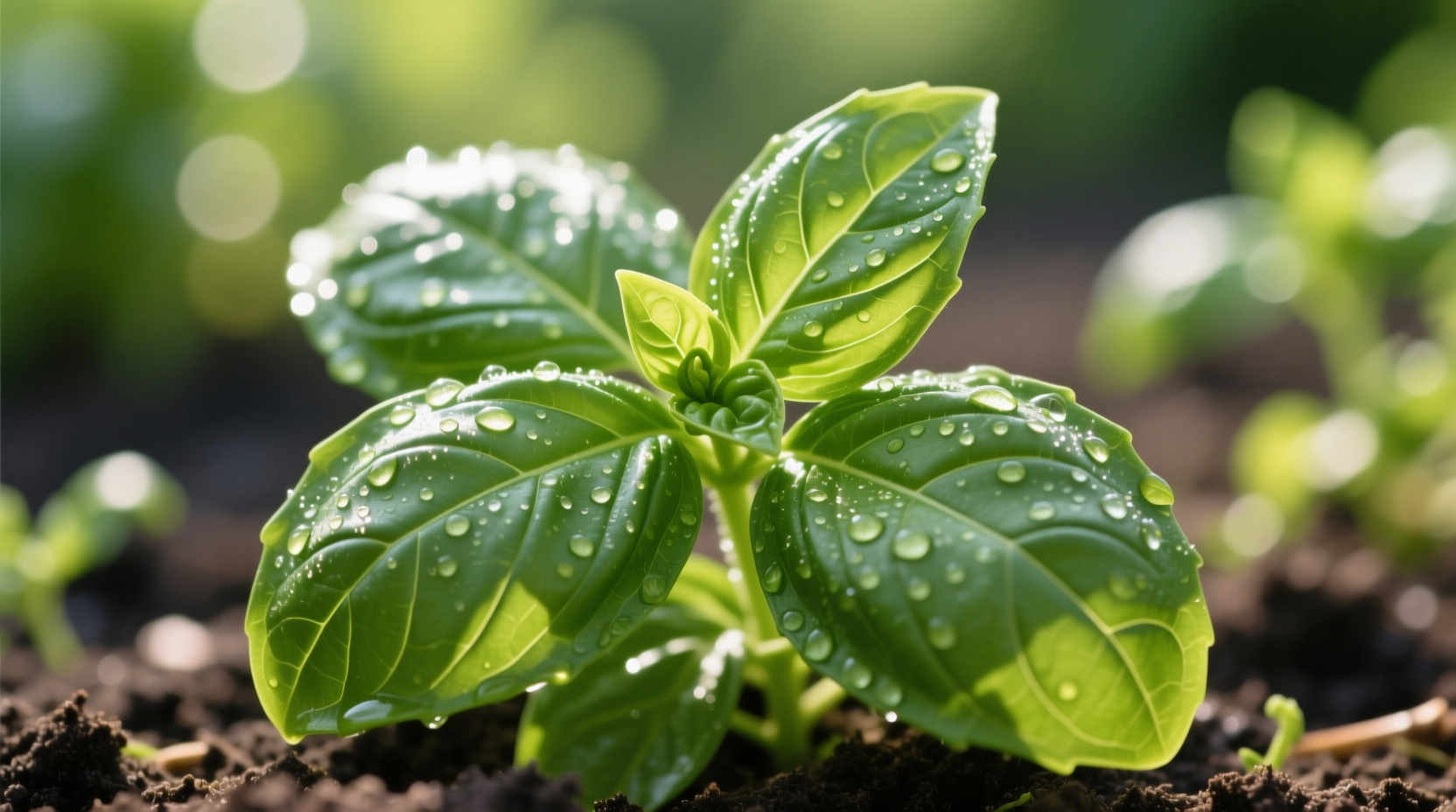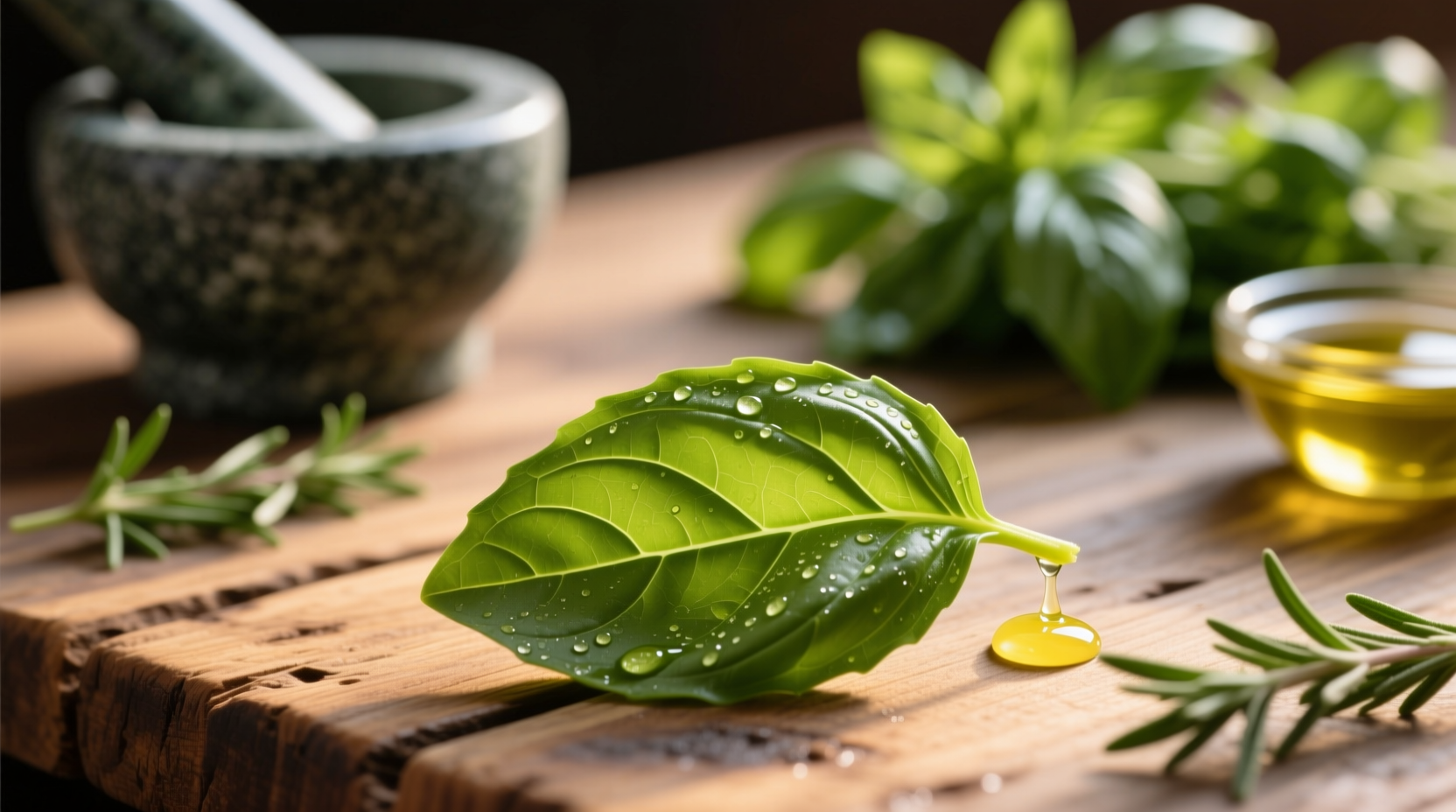Fresh basil has a distinctive sweet, peppery flavor with subtle anise or licorice undertones and a faint clove-like spiciness. The dominant compounds eugenol and linalool create its characteristic aroma, while methyl cinnamate contributes to its sweet notes. Flavor intensity varies significantly by variety, with sweet basil offering the most balanced profile while Thai basil delivers stronger anise notes.
Ever wondered why your pesto tastes different when you substitute Thai basil for sweet basil? Understanding what does basil taste like goes beyond a simple description—it's about recognizing how this versatile herb transforms dishes through its complex flavor chemistry. As a culinary professional who's worked with basil across global kitchens, I've discovered that mastering its nuances can elevate your cooking from ordinary to extraordinary.
The Core Flavor Profile of Basil
When you crush a fresh basil leaf between your fingers, you release volatile compounds that create its signature aroma. The primary flavor components include:
- Sweetness from methyl cinnamate (similar to cinnamon)
- Peppery bite from eugenol (also found in cloves)
- Anise/licorice notes from estragole (particularly prominent in Thai varieties)
- Subtle minty freshness from linalool
This unique combination explains why what basil tastes like in Italian dishes differs from its role in Southeast Asian cuisine. Sweet Genovese basil, the variety most common in Western cooking, offers the most balanced profile with moderate anise notes and pronounced sweetness. When cooked, basil's flavor transforms—its delicate compounds break down, mellowing the sweetness while intensifying the herbal notes.
How Different Basil Varieties Taste Distinctly Different
Not all basil tastes the same. The flavor profile varies dramatically across cultivars, affecting what basil tastes like when used in different recipes. Understanding these differences helps you select the right variety for your dish:
| Basil Variety | Primary Flavor Notes | Best Culinary Uses |
|---|---|---|
| Sweet Genovese | Balanced sweet-peppery with mild anise | Pesto, tomato dishes, caprese salad |
| Thai Basil | Strong anise/licorice, spicy heat | Curries, stir-fries, Vietnamese pho |
| Lemon Basil | Citrusy lemon with subtle basil notes | Fish dishes, fruit salads, teas |
| Dark Opal | Earthy, more intense peppery notes | Vinegars, infused oils, decorative garnish |
| Cinnamon Basil | Pronounced cinnamon with mild basil | Desserts, chocolate dishes, spiced beverages |
How Cooking Changes Basil's Flavor Profile
Understanding what basil tastes like when cooked versus raw is crucial for timing its addition to dishes. Heat transforms basil's volatile compounds:
- Raw application: Delivers bright, sweet notes with pronounced anise undertones—perfect for finishing dishes
- Short cooking (30-60 seconds): Preserves some sweetness while mellowing sharpness
- Extended cooking (10+ minutes): Converts sweet compounds to more herbal, sometimes bitter notes
Research from the University of California's Agricultural Extension shows that basil's linalool content decreases by 40% after just 5 minutes of simmering, explaining why fresh basil tastes different in cooked sauces compared to raw applications. For maximum flavor impact, add sweet basil during the last minute of cooking or use as a garnish.
The Evolution of Basil in Global Cuisine
Basil's flavor journey across cultures reveals why what basil tastes like varies by regional usage. This timeline shows how culinary applications evolved:
- 500 BCE: Ancient Hindus in India first cultivated holy basil (tulsi) for medicinal and spiritual purposes
- 1500s: Sweet basil arrives in Italy from Asia, initially grown as an ornamental plant
- 1700s: Genovese cooks develop pesto, recognizing basil's synergy with garlic and pine nuts
- 1800s: French chefs document basil's flavor chemistry, noting its volatile oil composition
- 1950s: Thai basil becomes globally recognized through Southeast Asian immigration
- 2000s: Molecular gastronomy studies identify specific compounds responsible for basil's flavor profile
This historical context explains why basil tastes different in Italian versus Thai cuisine—not just because of variety differences, but due to centuries of culinary adaptation to local palates.
When Basil Works Best (and When to Choose Alternatives)
Knowing what basil tastes like in different cooking scenarios helps avoid flavor mismatches. Consider these context boundaries:
- Use fresh basil when you want bright, sweet notes (salads, finishing sauces, raw preparations)
- Avoid cooking basil in acidic tomato sauces for extended periods (more than 10 minutes)
- Substitute dried basil only in long-simmered dishes where its muted flavor can develop
- Choose Thai basil for high-heat cooking as its compounds withstand heat better
According to flavor chemists at the Culinary Institute of America, basil's methyl chavicol content makes it particularly sensitive to heat and acid. This explains why what basil tastes like changes dramatically in tomato-based dishes—the acid breaks down its delicate flavor compounds within minutes.
Practical Flavor Pairing Guide
Maximize basil's potential by understanding what foods taste best with basil. These pairings leverage its chemical compatibility:
- Tomatoes: Basil's eugenol complements tomato's glutamates (umami synergy)
- Garlic: Sulfur compounds in garlic enhance basil's sweet notes
- Citrus: Lemon or orange zest brightens basil's herbal qualities
- Cheese: Parmesan's tyrosine crystals interact with basil's oils for complex flavor release
- Olive oil: Fat-soluble compounds in basil infuse beautifully into oil
For the classic what does basil taste like in pesto experience, the magic happens through emulsion—blending creates microscopic droplets where basil's volatile compounds interact with garlic and cheese compounds. Try this professional technique: bruise leaves gently with a mortar and pestle before blending to release more flavor compounds without oxidation.

When You Don't Have Basil: Smart Substitutes
If you're wondering what tastes similar to basil, consider these alternatives based on your specific need:
- For Italian dishes: Mix 2 parts parsley + 1 part mint + pinch of anise seed
- For Thai cooking: Use holy basil or substitute with mint + small amount of star anise
- For raw applications: Try lemon balm or young spinach leaves with lemon zest
- For cooked dishes: Oregano works in tomato sauces (use half the amount)
Remember that no substitute perfectly replicates what fresh basil tastes like—each alternative shifts the flavor profile. When substituting, adjust quantities gradually while tasting, as dried herbs are typically three times more potent than fresh.
Maximizing Flavor in Your Cooking
Apply these professional techniques to get the most from basil's distinctive taste:
- Harvest timing: Pick leaves in morning after dew dries for peak oil concentration
- Storage method: Treat like cut flowers—stems in water, covered loosely with plastic
- Cutting technique: Tear rather than chop to minimize oxidation of flavor compounds
- Infusion method: For oils or vinegars, use warm (not hot) liquid to preserve volatile compounds
Understanding what does basil taste like at a molecular level transforms how you use this herb. By matching the variety to your cooking method and complementary ingredients, you'll create dishes where basil's flavor shines exactly as intended—neither overpowering nor lost.











 浙公网安备
33010002000092号
浙公网安备
33010002000092号 浙B2-20120091-4
浙B2-20120091-4